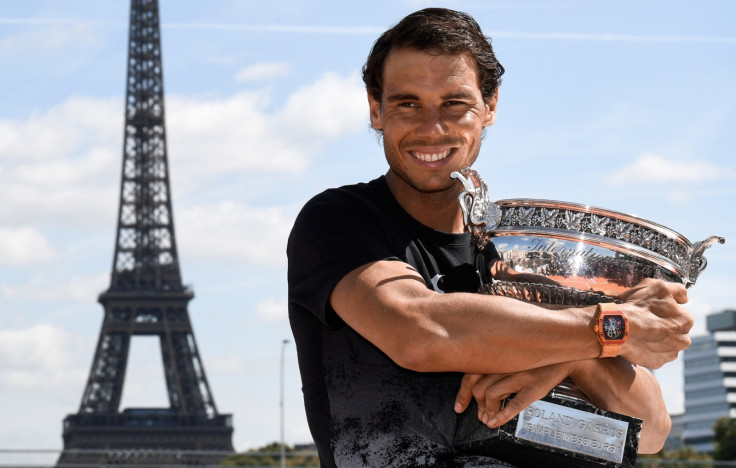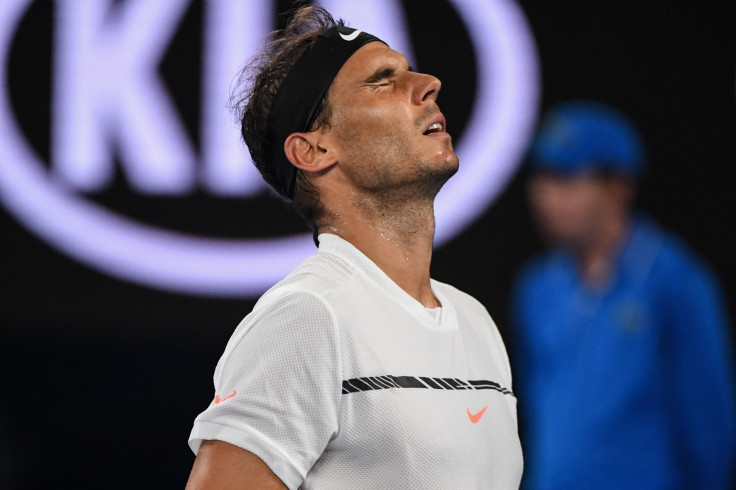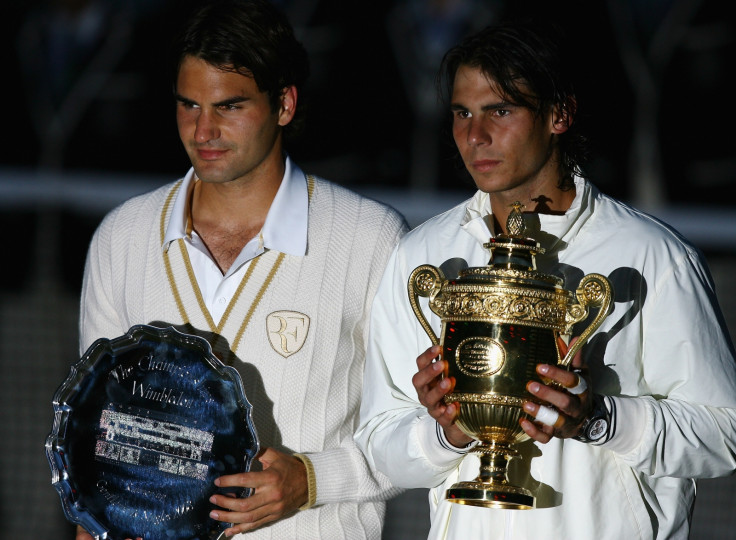The story of Rafael Nadal's revival – but why he could avoid Roger Federer at Wimbledon
KEY POINTS
- Spaniard won his 10th French Open crowd by beating Stanislas Wawrinka.
- Nadal has returned to his best after years battling knee injuries.
Rafael Nadal has done it again. After a faultless French Open campaign he has lifted his 10th title at Roland Garros with a superb victory over Stanislaw Wawrinka. Like the phoenix rising from his ashes, the Spaniard – playing in his second grand slam final of the year - won his first major tournament since 2014. Many fans and even journalists thought he was done.
The left-hander lost faith himself after so many injuries but must now be regarded as the greatest fighter in tennis history. IBTimes UK analyses the four main reasons for his renaissance.
Combating injury with aggression
Nadal is an out-of-this-world tennis player, not least from a technical point of view. It is true that his physical condition has made a difference along his career against giants such as Roger Federer, Novak Djokovic or Andy Murray, whose main skills do not rely so much on their aerobic fitness.
After so many injuries, Nadal has struggled for three years with all sorts of problems and though his fighting spirit has remained the same, he could not put it into practice for every match, in every tournament. The player born in Islas Baleares kept on winning matches but he was unable to take that extra step.
But those injuries are firmly in the past. Having overcome them, we have seen a new Nadal, with the clay court naturally the scene of his rebirth. Precisely in order to avoid injuries, we have seen a new version of Nadal in the last six months. He has taken more risks in every match, in order to shorten the points.
He needed an alternative plan to enlarge his career and the plan is working well. He spent just 10 hours and one minute on court during his first six matches at Paris before the final against Wawrinka, who had to fight five extra hours en route to the final.

The second serve miracle
Nadal has always shown a great variety of skills on his way to becoming one of the best players in the world alongside the evergreen Federer. His uncle Tony explained weeks ago: "After he stopped last season, we set a goal. Improve the serve and the attitude to remain competitive. He has made it and now his performances are great."
Statistics prove uncle Toni's prophecy. Nadal is third in the ranking when it comes to points won on serve. But his improvement on the second serve has been huge, having emerged as the best player on tour.
"There were changes even when it comes to the mechanical aspect of the serve. He knows that you cannot be a successful player without winners and the serve was the only part of his game style that has not been sublime," wrote El Confidencial after his stunning start of the season. The Nadal who previously struggled to make a difference with his serve is a thing of the past.

Carlos Moyá and the break points against.
After three seasons without lifting a grand slam, Nadal thought it was time for a plan B. Toni Nadal is more than just an uncle for him. He is the man who has led him to become the most successful clay court player in the history, to world number one and multiple major titles.
But for many months Nadal lost the ability to beat top 10 players. Carlos Moyá, former ATP number one and Rafa's friend since the beginning of his career, has played a pivotal role in changing his philosophy.
Moya managed to improve Milos Raonic's game a season ago, and since he joined Nadal's staff his pupil has becoming more aggressive, even changing his style during matches and turning into the best saver of break-points on the circuit, just after Ivo Karlovic. Last year, he finished in the 27<sup>th position.

The turning point in Melbourne
Nobody expected what we saw during the first two months of the season. Nadal and Federer fighting for the grand slams, rewinding men's tennis back to 2008. The Australian Open final was dramatic and though the Spaniard took the lead in the fifth set, he was unable to take advantage
Federer explained it better than anyone: "I would have been happy to lose too, to be honest, I am impressed by Nadal's return from injury. There are no draws in tennis, if there was going to be one, I would have been happy to share the title with Rafa."
Both players knew what they had achieved – leaving the result in the final aside - while Nadal was aware the clay court season was coming and that he could play a major role. On Sunday 11 June he complete 'La Decima' after losing just once during the clay court campaign. He might have lost in Melbourne, but he knew it was the start of a new era.

Wimbledon and the Federer example
Though it is true that when it comes to Nadal you cannot take anything for granted, it is difficult to see the 31-year-old challenging at SW19 next month. The grass courts are particularly demanding on Nadal's knees, his major area of weakness.
Federer's strategy is to cherry pick tournaments and rest during the clay court season, when he struggles the most, has been prolific in doing so. Alex Corretja, Boris Becker and Juan Carlos Ferrero have praised such a policy. It is unlikely that Nadal's team, including Moyá, will push him to his maximum during the coming months.
Whether he will take part or not in these tournaments remains to be seen, but Nadal said a month ago: "My aim, right now, is the same as Roger Federer's. Enlarge my career. Wimbledon? If I have pain in the knees, is almost impossible." It is difficult to see him reaching a third major final in a row in 2017.
© Copyright IBTimes 2025. All rights reserved.






















